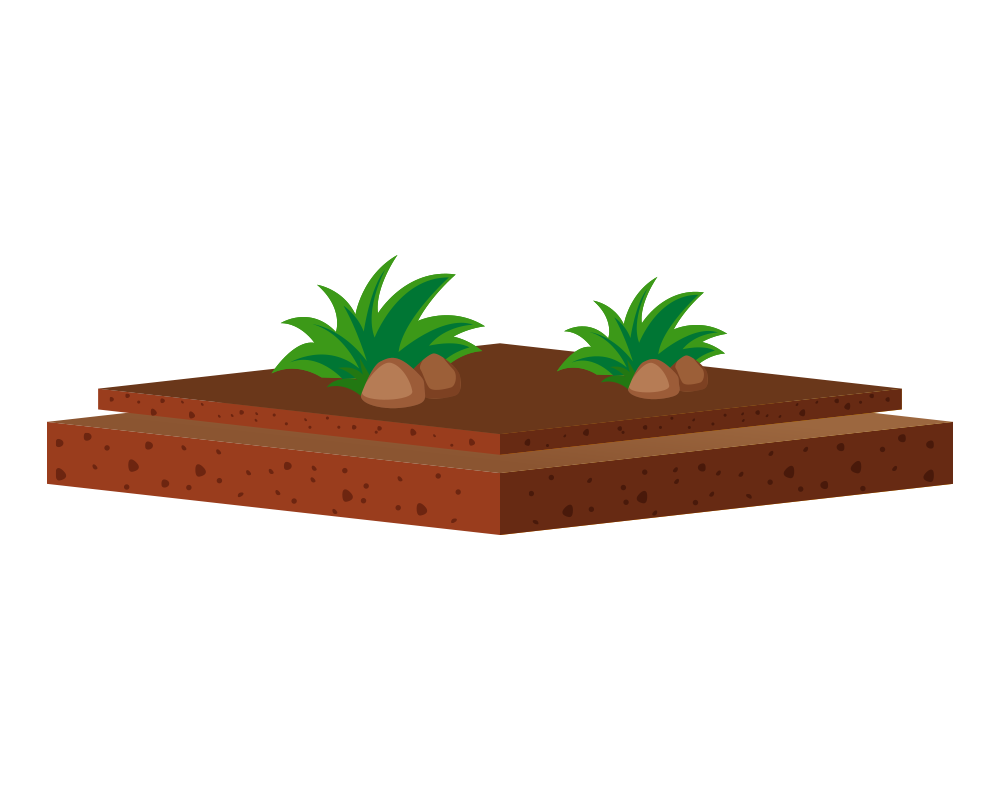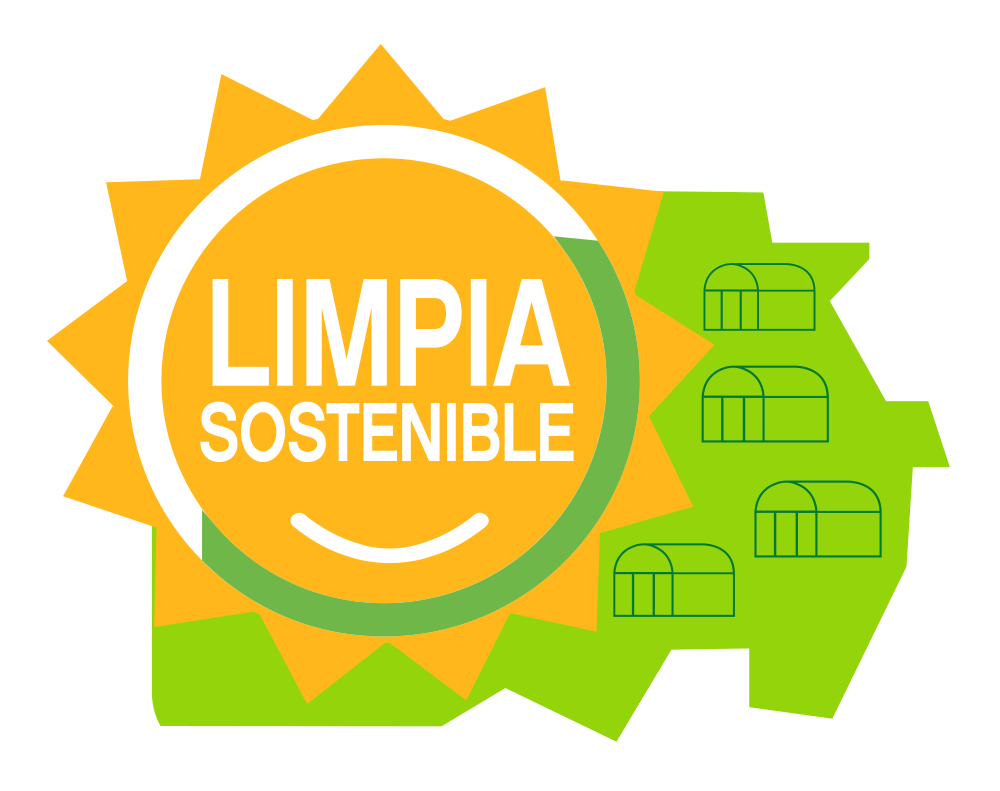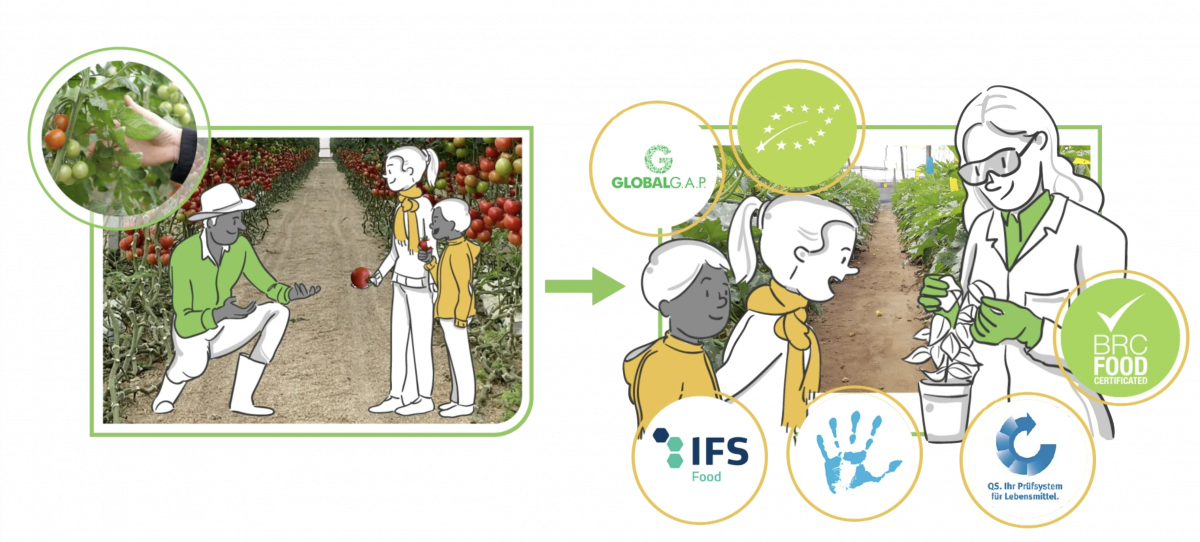
We select the best varieties of produce that are adapted to our location and agricultural methods, to obtain tasty fruit and vegetables which are produced within the European Union and comply with the quality standards of the European Food Safety Authority and distribution chains.
The solar greenhouses of southeast Europe are also committed to sustainable agriculture which strengthens the local economy, facilitates integrated immigration and comprises of environmentally friendly agricultural techniques and strict quality controls.
SUSTAINABILITY

We opt for sustainable methods of production for our crops while simultaneously promoting the production of rich and healthy food. That’s why solar greenhouses are the most environmentally-friendly method of cultivation and they contribute to proper maintenance and development of our crops:
- We optimise the use of scarce natural resources such as soil for farming and water, and we reduce our energy consumption and C02 emissions, as well as the use of pesticides.
- Our water footprint is 20 times less than that of crops grown in the open air, and we have irrigation ponds that collect rainwater and attract fauna, birds and amphibians and encourage coastal vegetation to grow.
- Each hectare of solar greenhouse absorbs 10 tonnes of C02 per year, which is equivalent to the daily emission of 8 cars.
- We reuse 80% of greenhouse plastic coverings, giving them a second life either by using them as a basis for other plastics or to produce fuel.

We opt for sustainable methods of production for our crops while simultaneously promoting the production of rich and healthy food. That’s why solar greenhouses are the most environmentally-friendly method of cultivation and they contribute to proper maintenance and development of our crops:

- We optimise the use of scarce natural resources such as soil for farming and water, and we reduce our energy consumption and C02 emissions, as well as the use of pesticides.

- Our water footprint is 20 times less than that of crops grown in the open air, and we have irrigation ponds that collect rainwater and attract fauna, birds and amphibians and encourage coastal vegetation to grow.

- Each hectare of solar greenhouse absorbs 10 tonnes of C02 per year, which is equivalent to the daily emission of 8 cars.

- We reuse 80% of greenhouse plastic coverings, giving them a second life either by using them as a basis for other plastics or to produce fuel.
FAMILY AGRICULTURE

We’re committed to small farmers and family farms, generating fairer, more equitable and cohesive economic activity, which actively contributes to local development in the region:
- We have a low ownership concentration: the average farm is only 2.4 hectares.
- We encourage entrepreneurship, cooperativeness, equality and a commitment to protecting natural resources and the environment.
- It facilitates the integration of immigrants who come as workforce: more than 100,000 workers of up to 140 different nationalities.
Solar greenhouses in southern Europe help create a circular economy, the development of which is thanks to family investment and sustainable-based production models, both on an environmental and social level.

We’re committed to small farmers and family farms, generating fairer, more equitable and cohesive economic activity, which actively contributes to local development in the region:

- We have a low ownership concentration: the average farm is only 2.4 hectares.

- We encourage entrepreneurship, cooperativeness, equality and a commitment to protecting natural resources and the environment.

- We promote fair competition and have agricultural wages that are up to 90% higher than those of nearby non-EU countries.

- It facilitates the integration of immigrants who come as workforce: more than 100,000 workers of up to 140 different nationalities.

Solar greenhouses in southern Europe help create a circular economy, the development of which is thanks to family investment and sustainable-based production models, both on an environmental and social level.

BIOLOGICAL PEST CONTROL

By combining tradition, experience and commitment to innovation, we’ve become a world leader in biological pest control:
- We opt for biological pest control, using auxiliary fauna on more than 80% of greenhouse crops, and even exceeding 99% on crops such as red pepper.
- This means that an army of tiny spiders, bed bugs, lacewings, wasps and up to 30 billion beneficial bugs live in the greenhouses, controlling pests so they don’t harm the plants.
- We also have other defences such as double doors, anti-insect netting, and chromatic attraction and pheromone traps to catch pests.
Another technique we employ is the use of insects, such as bumblebees, to ensure that flowers are pollinated and to produce the best fruit and vegetables in Europe. We use natural, sustainable and environmentally-friendly techniques, which not only reduce the use of pesticides, but also promote the gradual ecological transformation of our production.

By combining tradition, experience and commitment to innovation, we’ve become a world leader in biological pest control:

- We opt for biological pest control, using auxiliary fauna on more than 80% of greenhouse crops, and even exceeding 99% on crops such as red pepper.

- This means that an army of tiny spiders, bed bugs, lacewings, wasps and up to 30 billion beneficial bugs live in the greenhouses, controlling pests so they don’t harm the plants.

- We also have other defences such as double doors, anti-insect netting, and chromatic attraction and pheromone traps to catch pests.

Another technique we employ is the use of insects, such as bumblebees, to ensure that flowers are pollinated and to produce the best fruit and vegetables in Europe. We use natural, sustainable and environmentally-friendly techniques, which not only reduce the use of pesticides, but also promote the gradual ecological transformation of our production.
TRACEABILITY AND CERTIFICATIONS
We guarantee that all processes comply with the highest European food quality and safety standards, adhering to the most demanding international certifications, including: BRC, QS and ISO 9000.


Your food safety and the quality control of the food you eat is a fundamental priority for us. That’s why at the heart of our production, distribution and marketing systems are strict control systems based on traceability. This ensures that you can find out the origin and journey undergone of all our fruit and vegetables, from the moment we plant them until the moment you buy them in the store to enjoy them.
HEALTHY AND TASTY RECIPES

It’s not difficult to maintain a healthy and varied diet thanks to the produce grown in solar greenhouses.
That’s why we want to help you by offering you a wide selection of recipes that are easy to make, tasty and, of course, healthy and nutritious.
Eat a healthy diet without sacrificing flavour!










